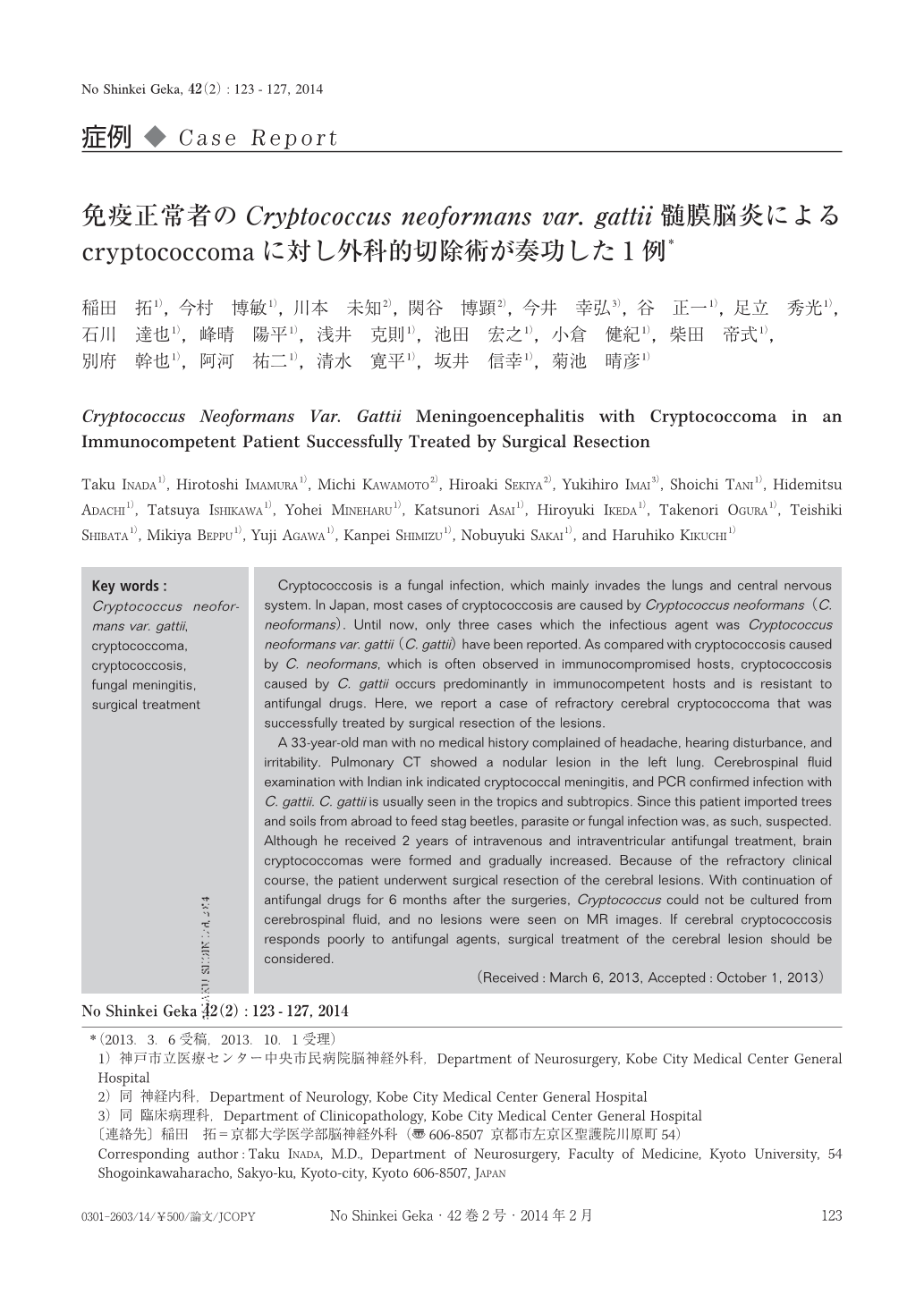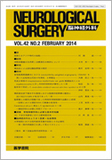Japanese
English
- 有料閲覧
- Abstract 文献概要
- 1ページ目 Look Inside
- 参考文献 Reference
Ⅰ.はじめに
クリプトコッカス症は,主に呼吸器と中枢神経系に病変を作ることが多い真菌感染症である.本邦ではCryptococcus neoformans(C. neoformans)が主な原因である.今回,われわれは免疫正常者が本邦では稀なCryptococcus neoformans var. gattii(C. gattii)によるクリプトコッカス髄膜脳炎を発症し,その治療中に酵母菌腫(cryptococcoma)を形成し抗真菌薬の全身投与および髄腔内投与に抵抗性であり,開頭摘出術が奏功した1例を経験したので報告する.
Cryptococcosis is a fungal infection, which mainly invades the lungs and central nervous system. In Japan, most cases of cryptococcosis are caused by Cryptococcus neoformans(C. neoformans). Until now, only three cases which the infectious agent was Cryptococcus neoformans var. gattii(C. gattii)have been reported. As compared with cryptococcosis caused by C. neoformans, which is often observed in immunocompromised hosts, cryptococcosis caused by C. gattii occurs predominantly in immunocompetent hosts and is resistant to antifungal drugs. Here, we report a case of refractory cerebral cryptococcoma that was successfully treated by surgical resection of the lesions.
A 33-year-old man with no medical history complained of headache, hearing disturbance, and irritability. Pulmonary CT showed a nodular lesion in the left lung. Cerebrospinal fluid examination with Indian ink indicated cryptococcal meningitis, and PCR confirmed infection with C. gattii. C. gattii is usually seen in the tropics and subtropics. Since this patient imported trees and soils from abroad to feed stag beetles, parasite or fungal infection was, as such, suspected. Although he received 2 years of intravenous and intraventricular antifungal treatment, brain cryptococcomas were formed and gradually increased. Because of the refractory clinical course, the patient underwent surgical resection of the cerebral lesions. With continuation of antifungal drugs for 6 months after the surgeries, Cryptococcus could not be cultured from cerebrospinal fluid, and no lesions were seen on MR images. If cerebral cryptococcosis responds poorly to antifungal agents, surgical treatment of the cerebral lesion should be considered.

Copyright © 2014, Igaku-Shoin Ltd. All rights reserved.


